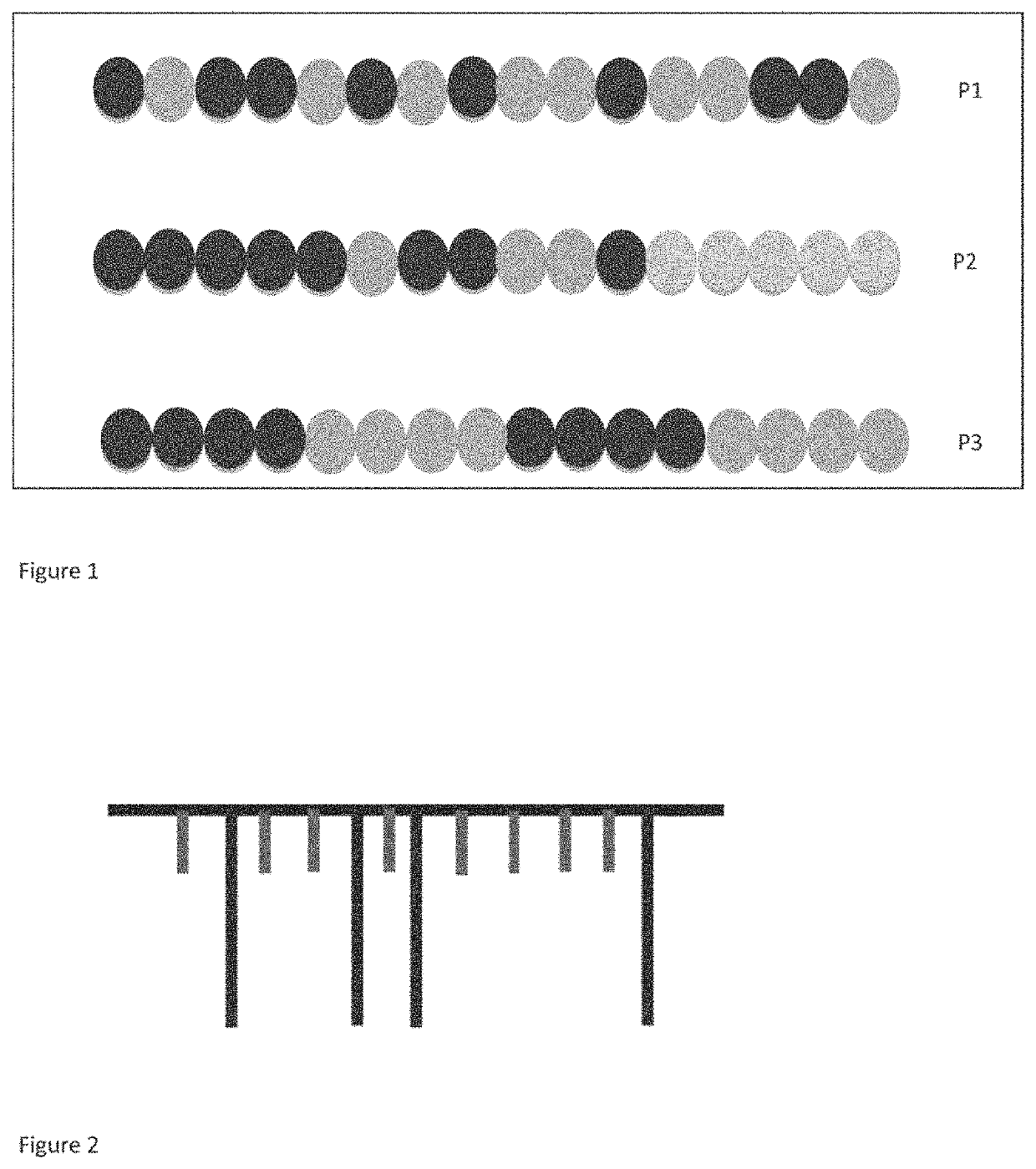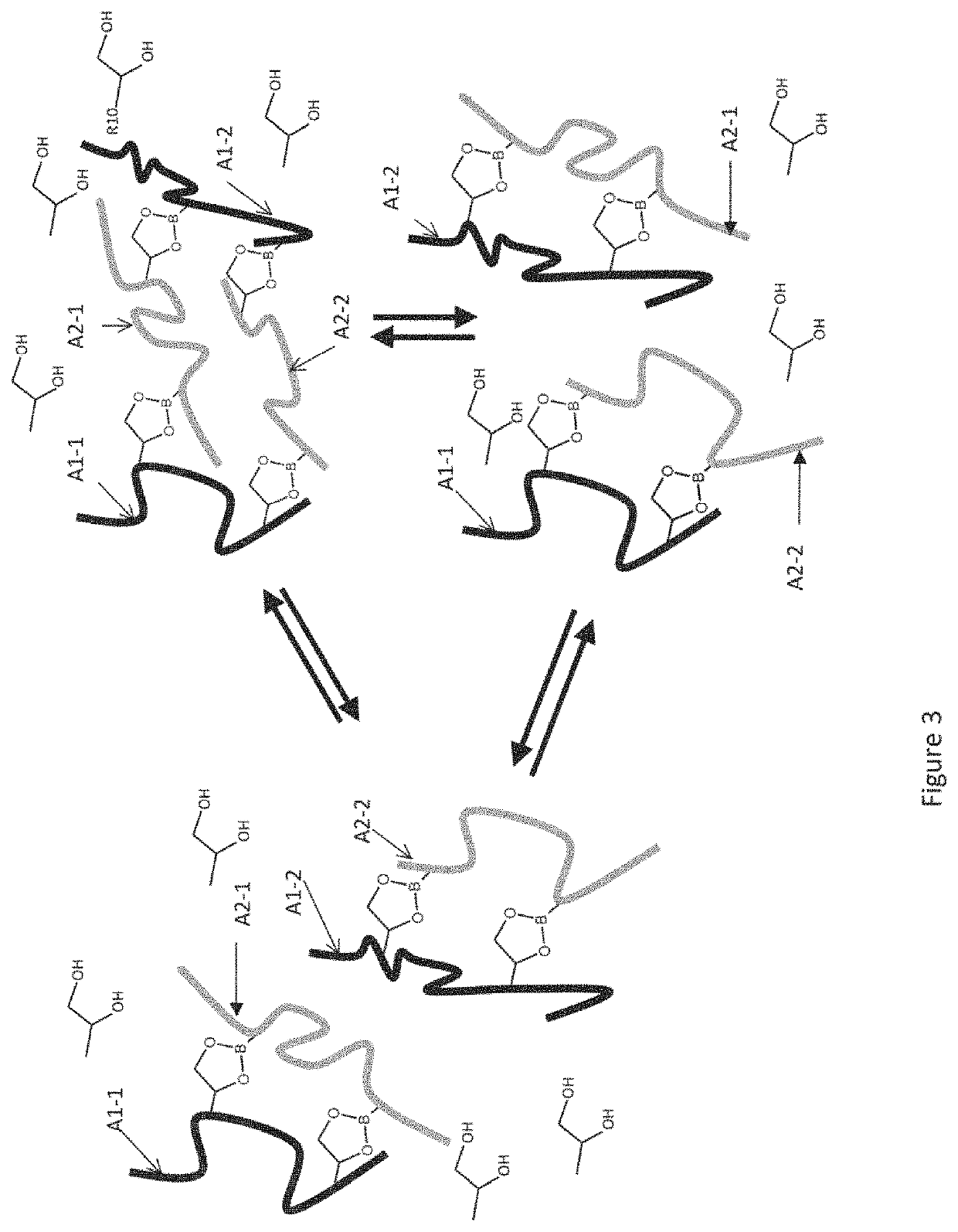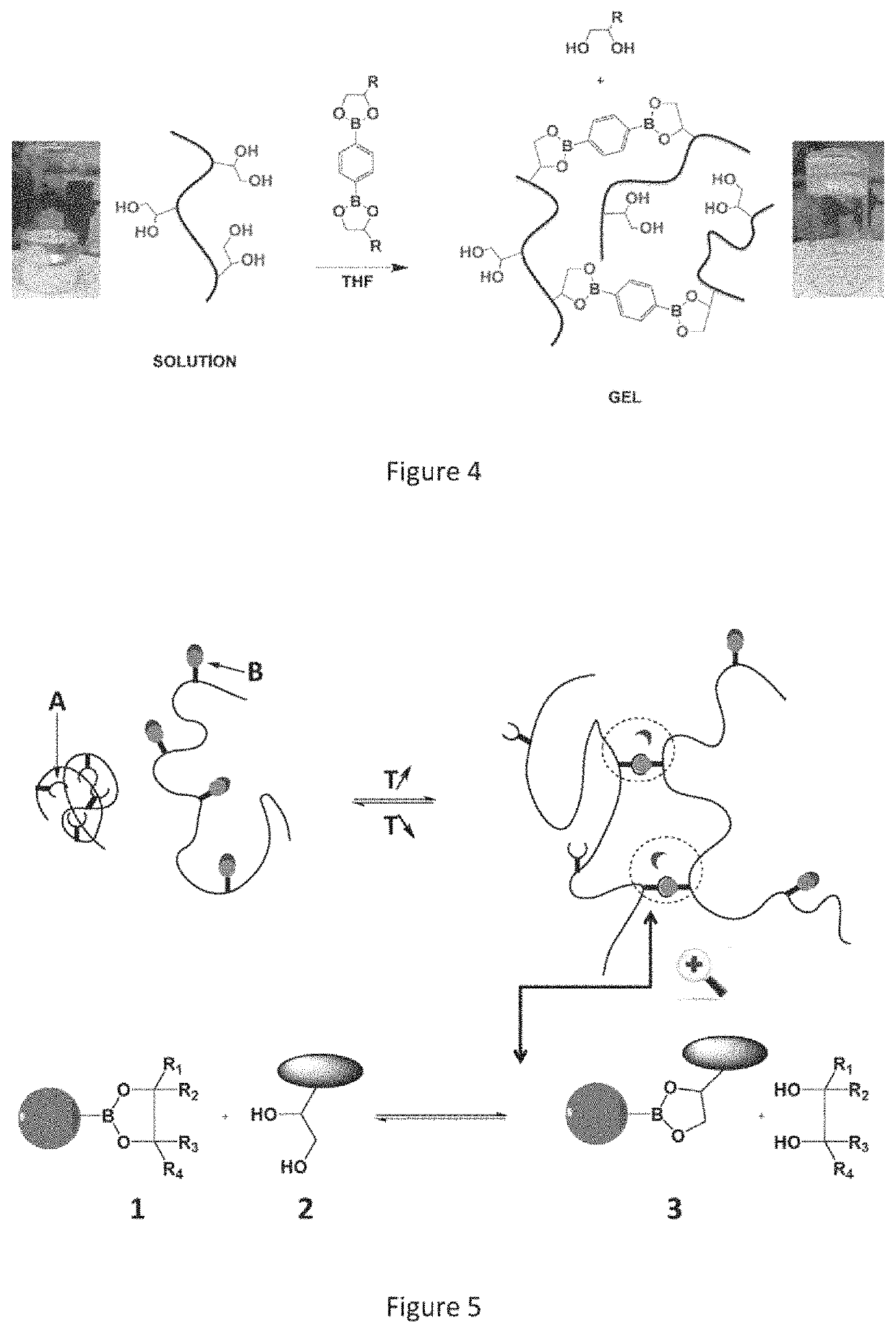Thermoassociative additive compositions, the association of which is controlled, and lubricating compositions containing same
a technology of additive compositions and compositions, applied in the direction of lubricating compositions, organic chemistry, group 3/13 element organic compounds, etc., can solve the problems of cleavage in macromolecular chains, substantial irreversible degradation of degradation of the properties of solutions based on high molar mass polymers
- Summary
- Abstract
- Description
- Claims
- Application Information
AI Technical Summary
Benefits of technology
Problems solved by technology
Method used
Image
Examples
Embodiment Construction
[0130]Additive Composition According to the Invention:
[0131]A first subject of the present invention is a thermoreversibly associative and exchangeable additive composition in which the degree of association is controlled by the presence of an “exogenous” compound, the composition resulting from the mixing of at least:[0132]one polydiol random copolymer A1,[0133]one compound A2, especially a random copolymer A2, comprising at least two boronic ester functions and which can associate with said polydiol random copolymer A1 via a transesterification reaction,[0134]one exogenous compound A5 chosen from those corresponding to formula (XI):
[0135]
[0136]in which:[0137]Q represents a group chosen from a hydrocarbon-based chain comprising from 1 to 30 carbon atoms, optionally substituted with one or more groups chosen from: a hydroxyl, a group —OJ or —C(O)—O-J with J being a hydrocarbon-based group comprising from 1 to 24 carbon atoms,[0138]G4 and G5, which may be identical or different, repr...
PUM
| Property | Measurement | Unit |
|---|---|---|
| mass ratio | aaaaa | aaaaa |
| polydispersity index | aaaaa | aaaaa |
| polydispersity index | aaaaa | aaaaa |
Abstract
Description
Claims
Application Information
 Login to View More
Login to View More - R&D Engineer
- R&D Manager
- IP Professional
- Industry Leading Data Capabilities
- Powerful AI technology
- Patent DNA Extraction
Browse by: Latest US Patents, China's latest patents, Technical Efficacy Thesaurus, Application Domain, Technology Topic, Popular Technical Reports.
© 2024 PatSnap. All rights reserved.Legal|Privacy policy|Modern Slavery Act Transparency Statement|Sitemap|About US| Contact US: help@patsnap.com










